How to Survive in The Wild: Basics to Surviving in The Wilderness
Leaving alone or being an introvert is always normal among us but leaving in the wilderness, this is something different altogether. When you want to spend some time in the wilderness, you will have to constantly be alert to the surroundings and the environment in general.
We all know that the wilderness usually is a very dangerous place right? But it can only be much safer when you are aware of the risks and certain dangers that you might face while there alone.
[the_ad_group id=”21″]
Well, this is not meant to scare you or something, but definitely, you will need to have at least some basic knowledge on how you to survive in the wild. It is important that you have this basic knowledge with you and maybe you can later improve them so that you will have the advanced skills required for you on how to survive in the wild.
The knowledge we are talking, about here, usually means that gap between your life and death. The knowledge that will keep you going, most importantly when you are far away from civilization or you are just too far to reach out for any help. This knowledge and skills can usually come in handy in any situation that you will encounter while there in the wild.
For this article today, we are going to look at some of this knowledge we are talking about and how they can help you in the wilderness. You can also use them in the case of any disaster situation.

For your preparations on how to survive in the wilderness, we have seen that you must have some basic skills and knowledge. For that, we shall look at the following points.
- How to build a shelter
- How you can start a campfire
- Looking for food and water
- How you can send signals for you to get some help
- How to navigate the area
These are just some of the areas you need to be an expert on, for you to stay sane and alive until you are found by the rescue team or just for as long as you planned to stay in the wilderness. Different people usually have different reasons as to why they would want to spend some time in the wild.
From this, another survivalist sometimes would prefer not to be saved while others usually get lost unwillingly. However, if you fall under either of these categories, at the end of this article you might be able to grab something new and can also be of use to you.
Building A Shelter
The shelter has always been one of the basic needs that everybody should have and you, living in the wilderness should not be an exception. Nobody can spend most of his or her time in a place where there’s no cover and warmth and these are just some of the things provided with some roof over your head.
Research shows that a person without any shelter in the wilderness cannot survive the harsh conditions, not more than one week. This is always because of the stormy winds, the rains and very low temperatures which usually leads to hypothermia.
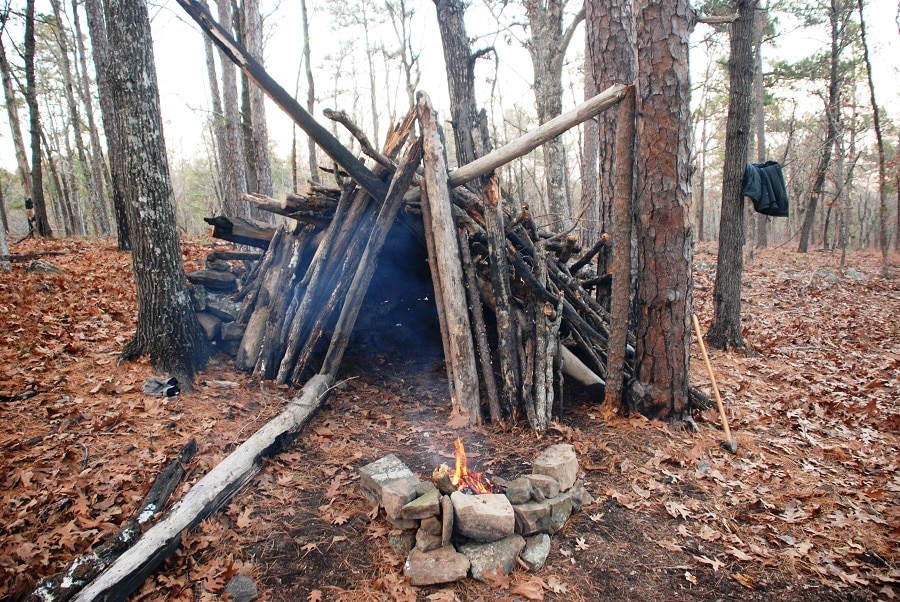
In the wilderness, the weather mostly does not stay stable in a week. You can sometimes get some surprise from winter storm or a summer rain attack thus for you to survive these conditions without a place to get cover can be really difficult.
So while in the wilderness, making a shelter should be the first priority you should have. You can begin by doing some research on the area and make sure that you find a nice and dry place where water cannot accumulate whenever it rains. The place should also not be on some slope as a flat place would be ideal.
Also, try and find a place that is close to a water source but keep some distance away from it since some wild animals might also be using the same source for drinking. Settling down near a water source is very much important since you can also use it as your source of food when hungry, definitely, we are talking about fishing.
After finding your ideal place, the next step you will take is now to find the materials you are going to use for making your shelter.
It will even be much greater in case you had a poncho, emergency blanket or even a tarp. These would really come in handy or else you will just have to make your shelter entirely depending on the wooden branches and some natural materials which will take you a lot of time. The wilderness has always been associated with strong winds and sometimes heavy rains once in a while.
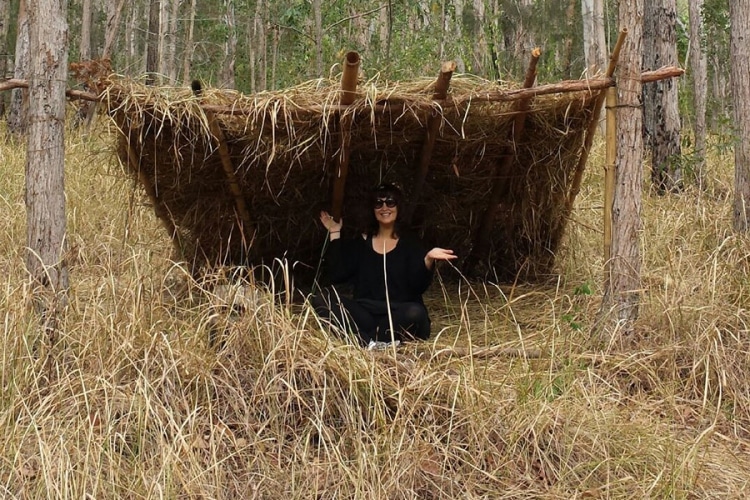
Well, you need to ensure that you build a shelter that can withstand these conditions. For the rains, you should make sure that your shelter only allows very little water to penetrate through since you are required to stay dry and warm throughout this time.
For those who will have no time to do all these, you can always try and find a natural cover somewhere e.g. the tree roots and caves. When you are going for the roots, just check and ensure it is not a dead or a totally dried up tree, this can be dangerous. Also, you need to make sure that these places are totally free from other inhabitants before going in.
Building A Fire
This can also be a very challenging task just like building a shelter. For those who are always used to making fire using only things like the fire starter and lighters, then it’s going to be a very difficult job.
You will be forced to work this out using only the materials provided for you by nature. You will have to use some primitive methods for you to achieve this if you do not have any matches or even a fire starter.
While staying in the wilderness, having a fire is going to be a necessity. You can always depend on it for three major purposes. Having fire can always keep you warm, you can use it to cook your food and you can also use it for scaring away the wild animals around.
You can also use the fire to boil your water thus making it safe for drinking and adding on to this, the smoke produced by it can always help you in repelling the mosquitoes and some other insects too.

For you to make your fire, you will start by finding some nicely dried up wooden branches and tinder. Make sure you don’t start your fire under some dry trees. You should always ensure you make your fire some distance away from the bushes and dry grass.
Always remember to make some small stone pit so that your fire can be contained. Strong winds can always blow your fire away something that is very dangerous as the flames can even catch on the nearby trees, dry grass or even your shelter. This might even result in a forest fire. Below are some few tips on how you can use natural materials to help you start a fire. You will need to have:
- Tinder
- Kindling
- Resin
With these three things, you can comfortably be able to start a fire. Tinder is some dry material that is usually very thin and tender. You might mistake it for a cotton but it’s usually a little bit rougher than a cotton.
[the_ad_group id=”22″]
You can also use things like the leaves and dry grass but the good thing with using tinder is that it’s always 100% dry and can even continue to burn after it has rained. This material is usually hard to find during winter and this is something worth noting.
It is always advisable that as you are walking, you need to collect this material since it can be difficult finding most of it in one particular place. You can collect and place it in some plastic bags somewhere safe. Make sure you collect as many of these as you can so that you may not be stranded when you will want to start up a fire.
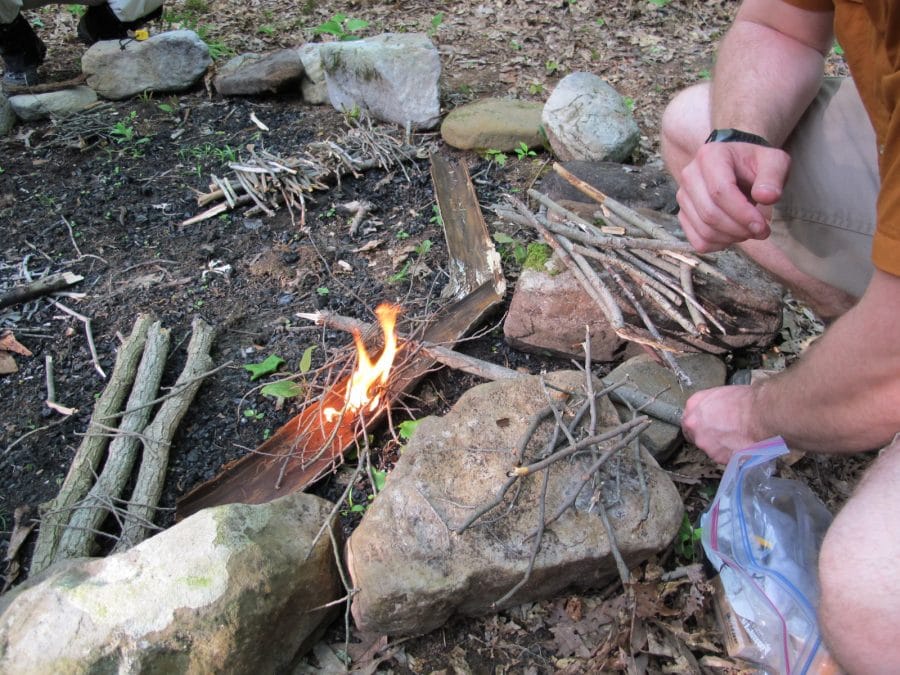
Kindling, these are always some dry materials from wood. Things like the twigs, the sticks, and other thin branches. These are also among some of the most flammable things that you can use for starting up a fire. To keep you informed on how to start a campfire, check out our additional tips for reference.
For the resin, this can usually be found from the trees which have an already damaged or cracked bark. This is what you need to use since it has the ability to immediately start up the flames. All you need to do is simply to rub the resin on the tinder or the kindling just to catalyze the process. You should not be waiting until the day you find yourself in the wilderness to start learning how to do this. You need to do some practice in a safe place so that you may be able to learn from your mistakes.
Searching for Water
Of course, water plays an important role in our lives. It is actually the most basic thing that we need for us to survive. Without water, nobody can be able to survive and make it through for several days. When you are in the wilderness, you need to have in mind that water can also carry viruses, microorganisms, and some other contaminants.
This is the main reason as to why no one should be drinking any water that has not gone through any proper boiling. Having any purification system, tablets or just any filtration plan, you can use it to clean your water and make it safe.
There has also been another way in which you can use to filter your water and that is through the soil. People prefer using the soil as it also has the capability of capturing the microorganisms and the viruses thus leaving your water clean. You can always use this method only as a final measure but don’t rely on it.
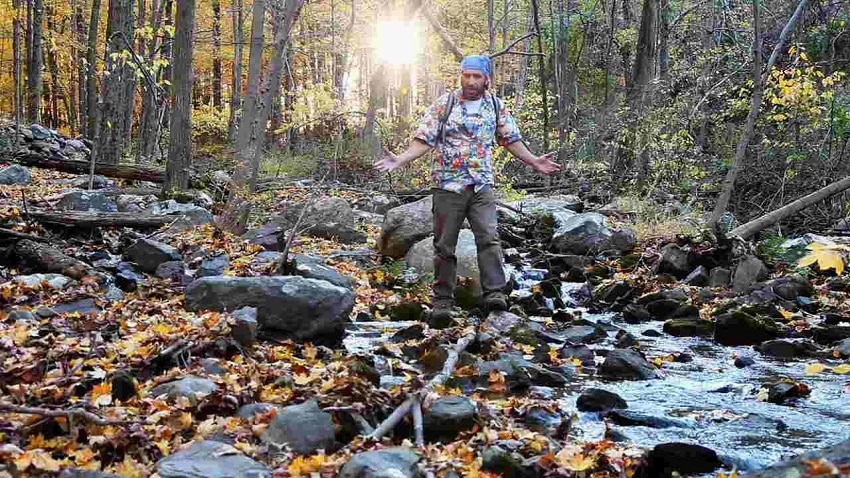
If the water is by any means containing some chemical pollutants, there is nothing you can do about this while still in the wilderness. The best solution is simply not to drink it. The only way you can use to purify this water is by using some purifying tablets. If you do not have these tablets, then this is too bad for you as these chemicals cannot be removed using anything else.
The following is a way in which you can use to find the water sources. Walk around and search for mad or a damp soil. There is usually a possibility that any valley or just some crevice can contain some rain water. Low areas also have a tendency of collecting the draining water.
You should also be keen and try inspecting the vegetation as it is always right that the vegetation usually is greener around water sources. Also, you can also observe the animal tracks as they will always use the same paths when going to their usual water source.
Actually, this is always a good sign to show that a water source might just be around. Finally, you can also use a map to locate the water source, in case you had one on the area you are in. a compass might also come in handy if you had one.
Looking for Food
Food can be relatively easier to find compared to water and shelter. You can always trap some wild animals or some rodents and fishing can also be an option here. You can also be getting some fresh food and use some plants if you are knowledgeable enough about them. Also, if you are not the type who can be easily disgusted, you can go for the insects which can be abundantly found.
See also: Prepare Your Own Food: 8 Ways to Eat Acorn
However, during winter, both the insects and animals can be very difficult to find, some of the edible plants can also prove to be difficult to come across. Anyway, for the insects, it is always advisable that you eat them only after cooking them as this might help in neutralizing or killing some of the bacteria or viruses that they might be having.
Fishing as one of your food solution can really help you. You might be lucky and find them in abundant especially when you settled down near a water source. Well, this will now depend on your skills at fishing. Hunting will also need you to have some knowledge and skill about it.
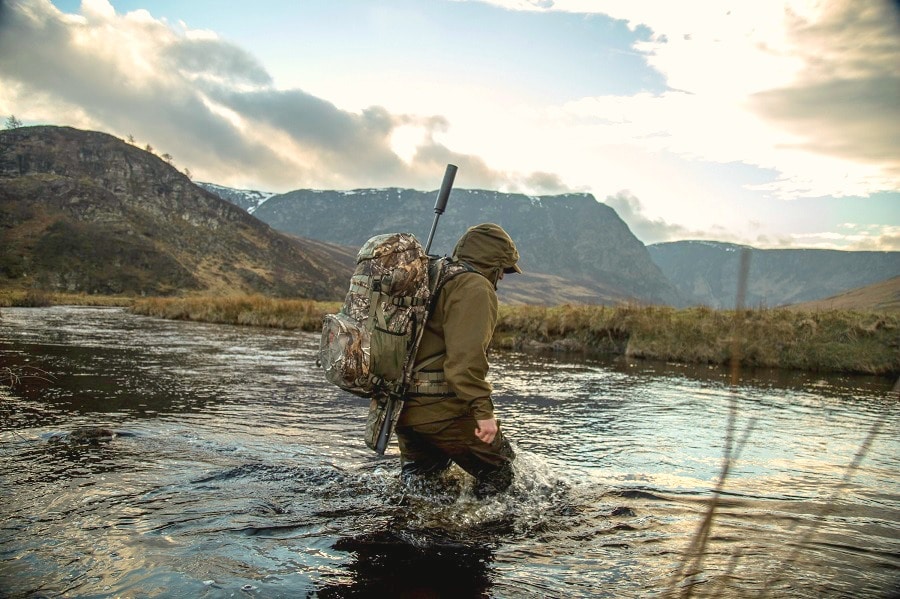
If at all you do not have any of these, not even tried to hunt, then its best for you not to make any attempts now. This might take you a lot of time and in the end, you might just come to your shelter with nothing apart from tiredness and hunger. It can also be a risky activity since you haven’t had a chance to try it before so it will just be good if you stick to what you know and you are also good at it.
While walking around, you might be lucky to come across some birds’ eggs. These are usually great food when you are trying to survive in the wild. You can always cook them just the same as the ordinary eggs.
You need to note that not every bird usually have their nests on the trees and branches, you can also find them on the ground but only in some secluded areas like around the tree roots or in the trees’ holes and this makes them be accessed with a lot of ease. Just an important point to remember, always cook your food for the viruses and the bacteria to be killed or neutralized.
Sending Signals to Find Some Help
While in the wilderness, sometimes you might get lost and this will force you to look for some help. Even the toughest survivalist at some point had to depend on someone for help. This means that you should also know how you can draw attention thus enabling you to find some assistance.

For visual signals, during the day it’s recommended to use fire. This can be done on a large are with a lot of space or on a hill. Both the fire and the smoke can make you be seen by the rescuers. Also, make sure that you know the rescue S.O.S signal. You can send the signals then wait for a while to send it again.
This message can usually be sent using a visual representation usually by arranging rocks and stones in some code fashion, smoke signals and also use a mirror or just any metal objects that are well polished for you sending light signals. A flashlight can really help you with this too.
Navigating The Area
For navigation, you can use some natural signs as this can also be very important for your survival. This includes the moon, stars, sun and even some trees. This can be used when you don’t have a compass. You can use the sun to differentiate the south from the north. To find out how to use a compass to navigate, check out our earlier piece that explains about this topic in detail.
[the_ad_group id=”23″]
The Wind can also help you to navigate the area since it usually tends to give some shaping to your surroundings. For instance a prevailing wind most of the times will slightly bend the trees enabling you to see its general trend. The wind will also leave some ridges in a snowy landscape or in the desert areas. This will help you to know the direction of the wind.

It can be a little bit easier to decipher the messages that plants might convey.
We all know that plants usually will thrive in sunny areas right? This will only mean that will thrive in the southern part of where you are in and if you are in the northern hemisphere, you might realize that there are a lot of trees crown facing the south and the opposite is true in the southern hemisphere.
With this few basic tips, I hope you can make it a little bit longer than a week otherwise good luck with your adventure and always remember to stay safe.
To keep you more informed on how to survive in the wilds, check out our additional tips for reference.






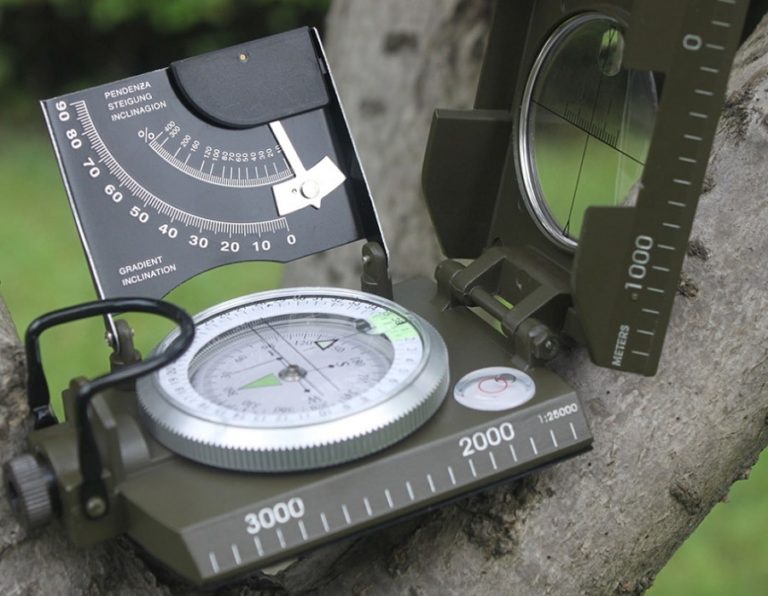
If you are not sure that someone will search for you soon, start your own rescue themselves. To do this move during daylight hours only, sleep at night. In order to survive try to only go in one direction and on the way to remember any objects, to eliminate the fermentation in a circle. Also, pay attention to the animal tracks. If you notice such, try to see where they lead. Often, they can bring you to the source of water or open space, where a rescue group will be easier for you to discover.
Indeed, survival is a matter of focus and will as well. If you want to survive, your instincts and actions should be strong enough to keep you going. Just don’t give up!
If you are not sure that someone will search for you soon, start your own rescue themselves. To do this move during daylight hours only, sleep at night. In order to survive try to only go in one direction and on the way to remember any objects, to eliminate the fermentation in a circle. Also, pay attention to the animal tracks. If you notice such, try to see where they lead. Often, they can bring you to the source of water or open space, where a rescue group will be easier for you to discover.
Indeed, survival is a matter of focus and will as well. If you want to survive, your instincts and actions should be strong enough to keep you going. Just don’t give up!
Rule No 1: don’t be sissy. In the woods and in the mountains no one has done for you showers and do not put the portable toilets. You will not be able to wash properly for a few days or even weeks. Toilet paper might end. Hot water is not always the case. Most likely, you (and your friends) will smell bad. And that’s fine. Everybody sometimes “stinks”. Go camping and hiking, be trained before living in the wild nature. But if you find this unacceptable, then the camp life is not for you.
These are strong words, Steve. But I couldn’t agree more. Camping and hiking is for the tough of body and heart, and if you’re the type of person who doesn’t want to do something out of their comfort zone, then this is not for you.
Rule No 1: don’t be sissy. In the woods and in the mountains no one has done for you showers and do not put the portable toilets. You will not be able to wash properly for a few days or even weeks. Toilet paper might end. Hot water is not always the case. Most likely, you (and your friends) will smell bad. And that’s fine. Everybody sometimes “stinks”. Go camping and hiking, be trained before living in the wild nature. But if you find this unacceptable, then the camp life is not for you.
These are strong words, Steve. But I couldn’t agree more. Camping and hiking is for the tough of body and heart, and if you’re the type of person who doesn’t want to do something out of their comfort zone, then this is not for you.